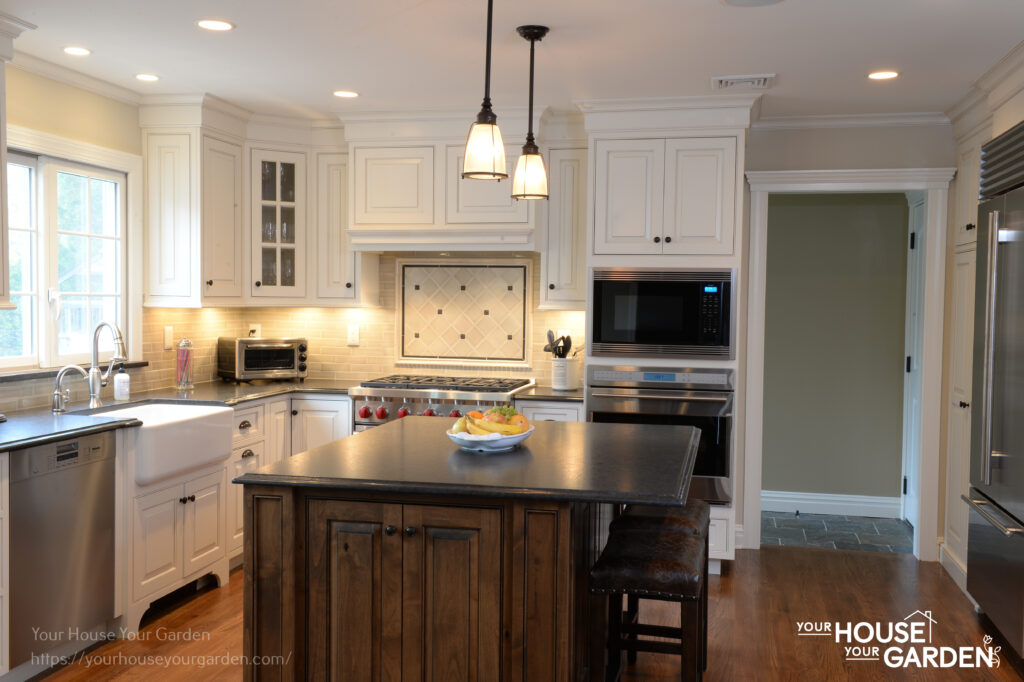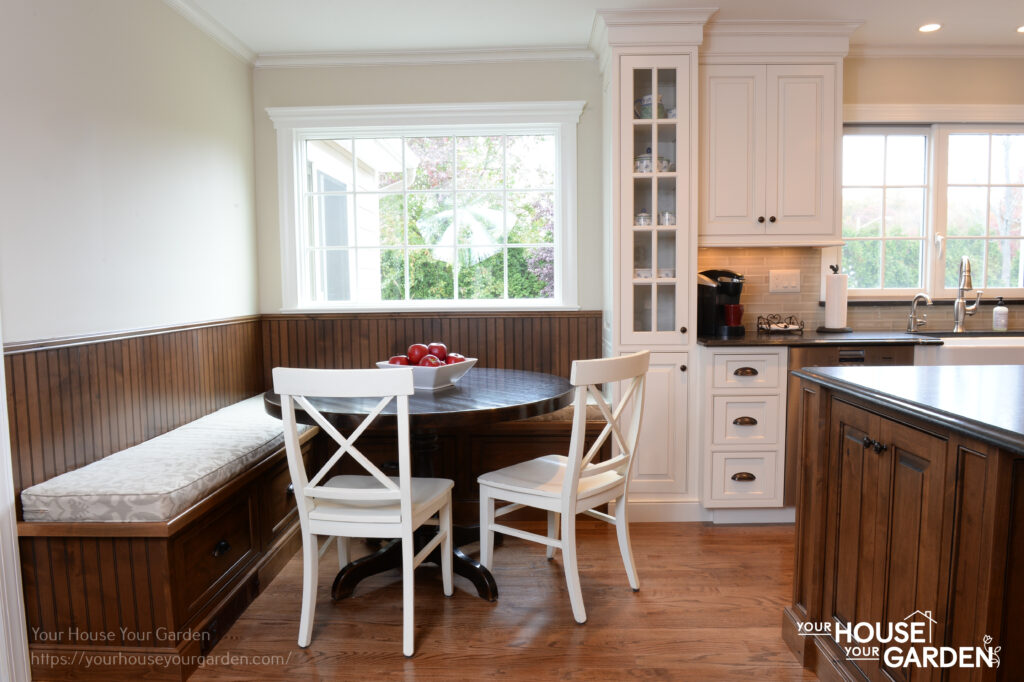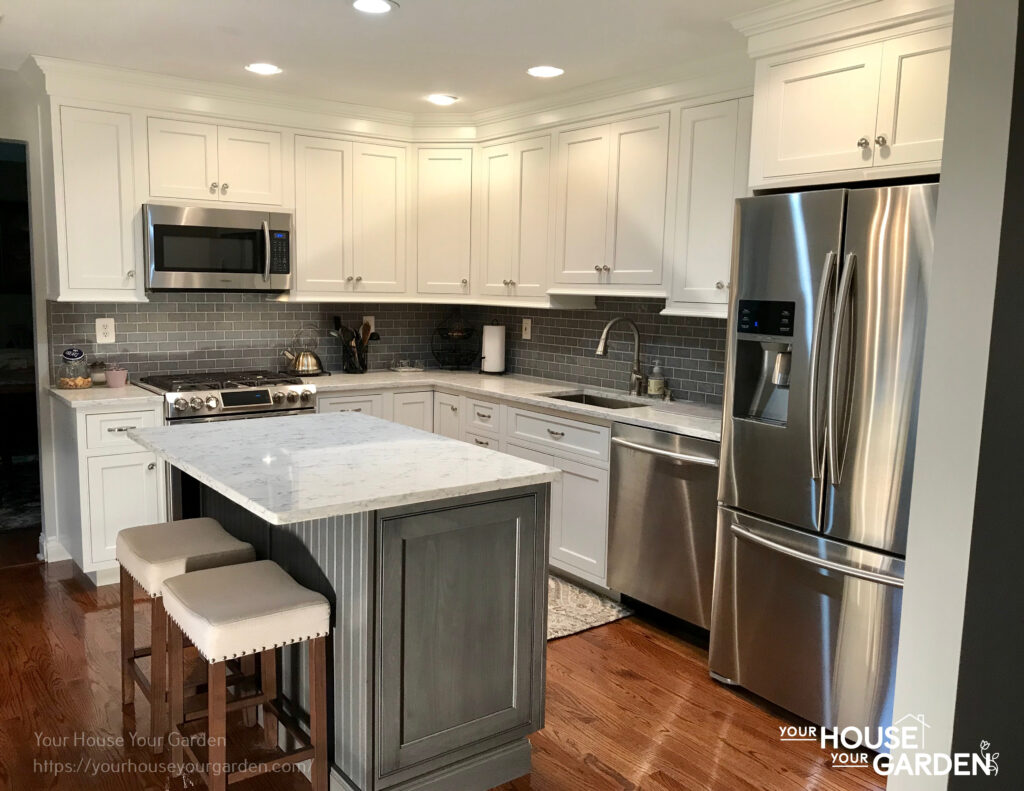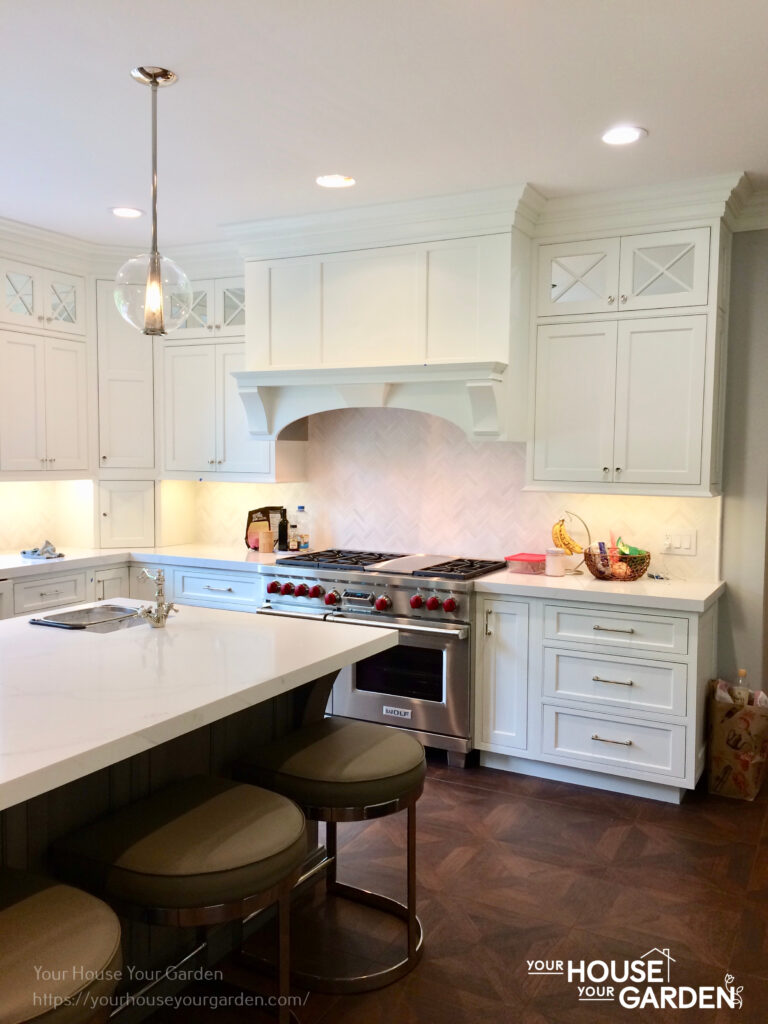Cabinet Refacing
Home » Home Remodeling » Cabinets » Cabinet Refacing

Cabinet refacing is a great way to revamp any kitchen to match a new style of aesthetic. Here’s our guide to the whole process and frequently asked questions that can help you if you are considering refacing.

What Does Cabinet Refacing Mean?
Cabinet resurfacing or refacing means that you are replacing your cabinet door and drawer skins and applying a new veneer, usually wood or laminate, while the cabinet box or body stays the same. Cabinet refacing is also when new doors hinges, handles, drawers, and other hardware are replaced.
The Process
Cabinet refacing can be done by professionals or you can perform DIY cabinet refacing if you have the skills and patience because the process is time-consuming.
The refacing process usually goes like this:
Your cabinet doors and drawers are removed. The drawer fronts are also removed but the rest of the drawer boxes are left as they are.
The front of the cabinets is covered with a natural wood veneer or rigid Thermofoil (RTF) which is melamine-based.
The sides of the kitchen cabinets are skinned with real wood veneer or laminate.
If needed, new hinges are added or your old hinges are repurposed or reused if they are in good condition.
The new drawer fronts and new doors are then installed.
Afterwards, drawer pulls, handles, and other fixtures or new hardware are installed. If you have hardware that is in good condition, you can request to reuse those too.
Installing accessories takes place which can include new knobs, custom molding, shelves, trimming, lighting, glass panels, or storage.
Cabinet Evaluation
Not all cabinets should be refaced because their construction affects whether or not the new veneer will be applied successfully. So how do you decide which cabinets need refacing and which are not a good candidate for refacing?
A cabinet that can be refaced will have a sturdy box that is constructed out of medium-density fiberboard (MDF) or plywood panels. Make sure that the panels are in good condition and smooth so that your new veneers can adhere to the cabinet body properly. Cabinets that are made out of Thermofoil or laminate cannot be refaced because they are not materials that can be sanded down, stripped, and painted over.
If your cabinet has a face frame made out of solid hardwood, it can be refaced. If the face frame of the cabinet you want to reface is in good condition, it will accept a new veneer well and will be able to anchor a new door too.
Your cabinets that have internal hardware intact can also be refaced. If the internal storage elements are in good condition and your cabinets are not lacking in shelving or storage, cabinet refacing is possible.
The refacing process can also take place if you are happy with your existing kitchen layout but are looking for an affordable alternative that can completely transform your kitchen.
The Pros and Cons of Cabinet Refacing
The benefits of cabinet refacing includes:
Sustainability. Most cabinets are made out of medium-density fiberboard (MDF) which contains a hazardous chemical called formaldehyde. By choosing to reface cabinets, there is no need to deposit these toxic cabinet boxes into landfills. You also save trees from being cut down and used to make new cabinetry.
Cost-effective. In general, refacing will cost 50% less than what you would spend for new cabinets. This means that you can use more money on the rest of your new kitchen like that new backsplash you’ve been eyeing, more expensive wood types for your countertop, or fancy door hardware.
Maintain the current layout of the old kitchen. As you are only replacing the door and drawer skins, complete remodeling does not take place. Without kitchen remodeling your layout stays the same if you are happy with it.
There’s no need for a full kitchen remodel. Not only is there no need to install new cabinetry, but a refaced kitchen cabinet can also give you your dream kitchen at a fraction of the cost.
You can increase the value of your home. Kitchen cabinet refacing can help homeowners give existing cabinets a new look with drawer glides or a modern shaker door that is aesthetic and functional. If you are planning to sell your home or rent it out in the future, invest in cabinet refacing services.
Preserve your countertops. With expensive countertops that have attached cabinetry, refacing cabinets only touch the existing cabinet boxes which means that you have a higher chance of preserving your countertop. Installing new cabinets can damage marble or quartz so opt for DIY cabinet refacing or hire a professional to reface kitchen cabinets.
As a homeowner, there are also downsides to cabinet refacing which can include:
It can be challenging to do DIY cabinet refacing. DIY cabinet refacing requires a certain level of skill as well as patience over the course of around a week. You will need to make sure that the face frames are intact, the drawer box is functioning, materials are high-quality, your veneer is applied properly, and that cabinet doors are suitable for the cabinet refacing process.
You cannot make more space for additional cabinets. While you can install additional shelving, pull-out units, and extra storage, you do not actually have the opportunity to install new kitchen cabinets.
The costs can add up. If you are purchasing custom cabinets or have new hardware for your cabinet doors, the costs can actually add up. Make sure that when you are choosing materials and accessories that you have a low-maintenance option that can last you a long time.

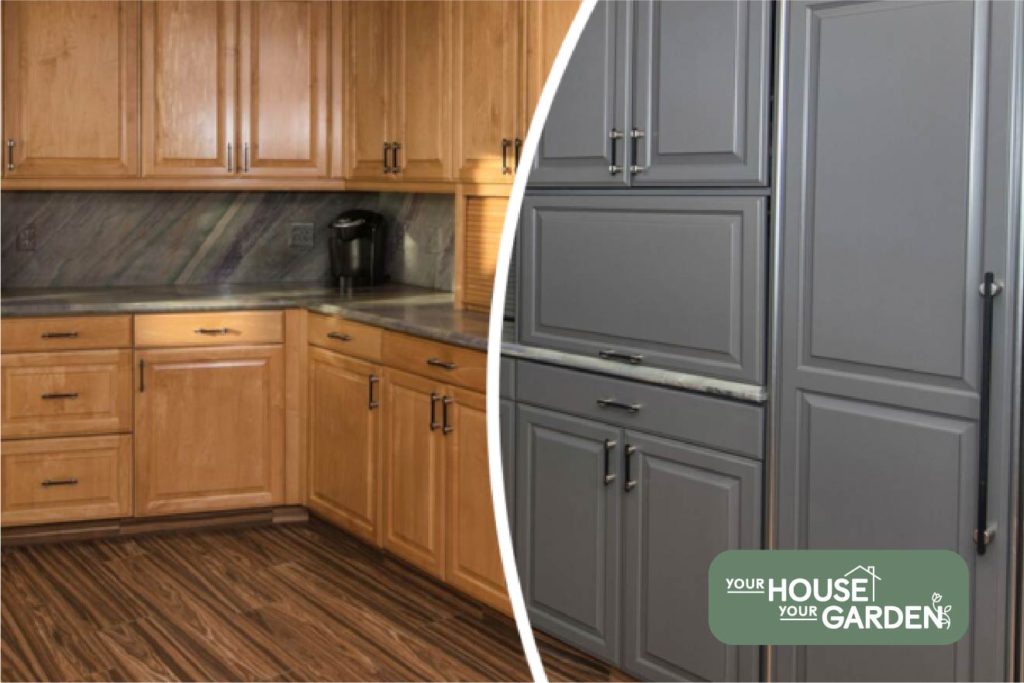
FAQs
How much does cabinet refacing cost?
While refacing can cost less than replacing kitchen cabinets, an average kitchen with cabinets will cost you $7000 to $10,000. However, this will fluctuate and depend on the materials, hardware, accessories, and add-ins you choose.
The cost for DIY refacing will cost about $500 to $1000 for veneer materials alone. The new doors, drawer fronts, cabinet frames, hardware, and tools will cost you another $1000 to $3000.
Is it cheaper to reface or refinish kitchen cabinets?
It is cheaper to refinish cabinets but refacing cabinets can be more durable because of the wood, RTF, veneer, and hardware that they use.
How long does cabinet refacing take?
A cabinet refacing professional can perform the service within 1 day to 4 days depending on how large your kitchen is and how many cabinets are going to be refaced. A typical schedule can look like this:
Day 1: The drawers fronts, doors, hardware, and accessories are removed so that veneering can take place.
Day 2: More veneering will take place during this time.
Day 3: New cabinet doors and drawer fronts are installed. Hardware and accessories are also installed before final checking.
However, DIY cabinet refacing can take up to a week. You will need to select the type of cabinet doors you want as well the color or finish. Measure the space you have for your cabinets and order the necessary parts like hinges and accessories or purchase a kit with everything that you will need.
What does resurfacing cabinets mean?
You can choose to keep your cabinet boxes but replace the doors and drawer fronts. Your cabinets’ framework is resurfaced with wood veneer to laminate as a replacement material to cover up blemishes and change up the color, style, or wood of your cabinet doors.
How much will I need to spend on the doors’ hardware?
Your cabinet door hardware can cost between $2 to $20 for every pull or knob. An average kitchen has 40 knobs or pulls so expect to shell out anywhere from $80 to $800. Also, save around $130 to $275 if you want a professional to install hardware on your cabinet doors.
Should I opt for DIY cabinet refacing?
If you are trying to cut down on refacing costs and you have the skills to reface kitchen cabinets yourself, then you can. If you are willing to explore the best price that professionals offer for this process, then let the professionals take care of everything.
Cabinet Refacing Projects by YHYG:
